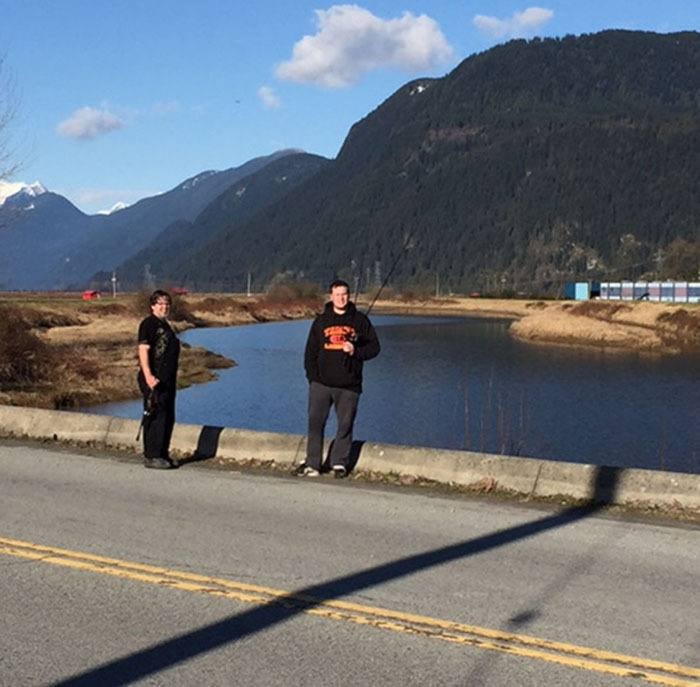The pump itself won’t be fish friendly, but the connecting infrastructure will allow fish to move back and forth between waterways, Pitt Meadows Mayor John Becker said.
Folks told me they were confused.
Me, too.
To clarify, “fish friendly” means “to allow fish to move back and forth between waterways.”
Fish would not be able to move back and forth from Sturgeon Slough to the Pitt River, its source, without a new pump and connecting infrastructure that also facilitates the movement of fish. But, approved upgrades to unfriendly pumps and floodgates will let them move freely.
Shared funding for these – $6.975m – is in place, a third federal, provincial and municipal.
“The design,” says city engineer Forest Smith, “currently includes pump station replacement [fish friendly screw type that allows passage], rehabilitation of existing dike culverts and gates, upgrading to fish friendly flood boxes, and decommissioning of the existing pump station.” Smith says work will begin by 2018 and be completed in 2019.
The existing Sturgeon Slough pump (1952), half way up the channel was never fish friendly. Impellers inside grind them up.The new one – an Archimedes screw assembly – will be kinder. The auger inside lets fish pass through unharmed the way revolving glass doors let us slip into hotel lobbies.
Unfriendly, old hydraulic flood gates have been another problem. They’re closed to fish most of the year, only opening tothe Pitt River when pressure of rising water in the slough forces flaps open. Few fish can push through the current.
There was a time they didn’t have to contend with man-made barriers such as these. Fish swam the whole slough freely -southward to Ladner Road and beyond where fishermen catch landlocked carp and bass today. They reared and spawned ina connected waterway.
As a teenager, Mike Gjaltema recalls “chum jumping in pools” near a waterfall coming off surrounding hills. It’s at the northend of a golf course. Water gurgles down a pipe and under a paved parking lot now.
We may never see that again, but fish will return when barriers to salmonid are replaced.
Scott Magri of the Katzie Slough Restoration Project is hopeful.
“New, automated flood gates,” he says, “can be programmed to gradually open and close with the tides without any fear offlooding.”
The channel would be constantly refreshed, water would be cleaner, fish could return, rear, some could spawn.
Magri and Lina Azeez, of Watershed Watch, hope that happens when the Bains and Kennedy pump stations are gone fromKatzie Slough.
Fish friendly irrigation structures benefit salmon and habitat.
A pump and automated, motorized gate on Spencer Creek (2010) in Maple Ridge brought coho back, notes Ross Davies ofthe Kanaka Education and Environmental Partnership Society.
Water never rises beyond safe levels.
There’s no flooding.
We could see this on Sturgeon Slough.
Until now, Pitt Meadows couldn’t coax infrastructure money out of Victoria.
A contribution wasn’t coming from the feds under a Conservative government that weakened habitat protection.
Liberal MP Dan Ruimy counted spawners on Millionaire Creek with ARMS this spring, and conveyed the wisdom of local streamkeepers to the Standing Committee on Fisheries that met to shore up the Fish Act. That had to help.
In 2012, a DFO survey concluded that current conditions in Sturgeon Slough don’t favor juvenile salmon. It’s subject to high water temperature, low flows, large amounts of organic debris, and low dissolved oxygen, all of which “create unstable conditions” for fish.
While new infrastructure is being built, let’s monitor water quality. It should be free of pesticides or herbicides.
Debbie Miller, chief negotiator of Katzie First Nations, says it’s on her wish list, along with sturgeon cruising around Sturgeon Slough again.
– Jack Emberly is a retired teacher, local author and environmentalist.
